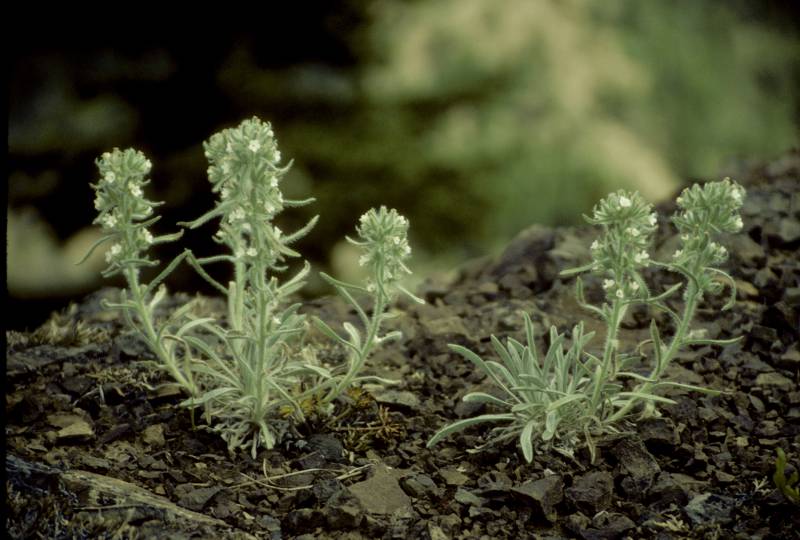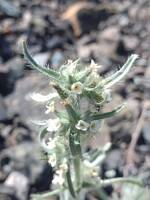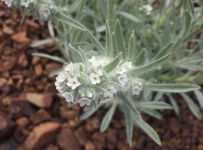Distribution: Occurring east of the Cascades crest in Washington, where endemic to the Wenatchee Mountains and nearby areas.
Habitat: Middle elevations in the mountains
Flowers: May-July
Origin: Native
Growth Duration: Perennial
Conservation Status: Not of concern
Pollination: Bees, flies
Perennial from a stout taproot and branched crown, the several stems 1-3 dm. tall; herbage with bristles in blisters and somewhat close-woolly.
Basal leaves tufted, oblanceolate, short-petiolate, 4-7 cm. long and 5-10 mm. wide; cauline leaves becoming narrower and sessile, but still elongate in the inflorescence.
Inflorescence an elongate, narrow panicle, with short, bracteate spikes along the main stem; corolla white, 5-lobed, the tube about equaling the calyx, the limb 4-8 mm. wide.
Nutlets 4, lance-ovate, 4 mm. long, roughened on the back, smooth ventrally, attached to the style.
Publication: Ill. Fl. Pacific States 3: 600. 1951.
PNW Herbaria: Specimen records of Oreocarya thompsonii in the Consortium of Pacific Northwest Herbaria database
WA Flora Checklist: Oreocarya thompsonii checklist entry
OregonFlora: Oreocarya thompsonii information
E-Flora BC: Oreocarya thompsonii atlas page
CalPhotos: Oreocarya thompsonii photos

































